The 26th U.N. Climate Change Conference (COP26) is scheduled to take place in Glasgow from October 31 to November 12, under the co-presidency of the United Kingdom and Italy. Brookings scholars from around the institution weigh in on how what does (or does not) happen at the conference will impact their area of expertise.
Climate change finance at the macro level
 AMAR BHATTACHARYA
AMAR BHATTACHARYA
Senior Fellow, Center for Sustainable Development
Earlier this year, Special Presidential Envoy for Climate John Kerry described COP26 as “our last, best, chance on climate.” Since then, evidence has mounted on the costs of climate change and the urgency of action. Most compellingly, the United Nations’ 2021 Intergovernmental Panel on Climate Change report amasses the scientific evidence on the rapid acceleration of climate change, dramatically narrowing the window for limiting global warming from 2°C to 1.5°C and underscoring the imperative to reach net zero emissions by 2050.
The U.K. COP26 presidency aims to respond to this urgency through four priorities: secure global net zero by mid-century and keep 1.5°C within reach; adapt to protect communities and natural habitats; mobilize finance; and work together to deliver. In each of these four areas there has been a substantial ramp up in ambition. But this progress still falls short of what is needed.
One hundred and thirty countries have committed to net zero, and several — including the G-7 — have set much more ambitious targets for emission reductions by 2030. But many major emitters have not, and the aggregate commitment will fall far short. Many donors have stepped up their climate finance commitments, and a new delivery plan indicates that the $100 billion of climate finance per annum by 2020 commitment will be met no later than 2023. But we now know that around $1 trillion per annum will be needed in developing countries other than China, to accelerate climate investments at the pace needed.
All efforts must be made at COP26 to press for ambitious, concrete deliverables. Inevitably though, much more will need to be done. It will be a success, not a failure, for COP26 to clearly recognize the shortfalls and set a path that can allow us not just to deliver on climate goals but also realize the growth and development opportunities that lie in a low-carbon future.
China’s economic calculations on climate
 DAVID DOLLAR (@davidrdollar)
DAVID DOLLAR (@davidrdollar)
Senior Fellow, John L. Thornton China Center
China has put itself in a tough situation heading into the Glasgow conference. It has created problems in its own power sector for reasons not directly related to climate change. It stopped importing coal from Australia because that country called for an independent international effort to find the origins of COVID-19. Strong rebound in China’s economy in the first half of the year then led to a surge in the price of coal. But prices for electricity were kept at arbitrary low levels, so that it was not economically efficient to use coal to generate power. The result has been the worst power shortages in 20 years, and still high prices of coal as China heads into the winter season.
Meanwhile, the world is looking to China — by far the largest emitter of greenhouse gases — to lay out bold new measures and targets for carbon reduction. But it is difficult for the government to make concrete commitments as long as its immediate energy crisis continues. With the right policies, Beijing could address both short and long-term issues at once. Most important would be a higher price for power and energy more generally, which would discourage wasteful use and solve the immediate power shortage. China has ambitious plans to increase reliance on solar, wind, hydro, and nuclear to generate power, and to transition its vehicle fleet to electric vehicles. But its plans still rely on coal for a long time. More commitment to energy efficiency and use of gas as a transition fuel would significantly reduce its near-term carbon footprint.
Biodiversity
 VANDA FELBAB-BROWN (@VFelbabBrown)
VANDA FELBAB-BROWN (@VFelbabBrown)
Senior Fellow, Center for Security, Strategy, and Technology and Director, Initiative on Nonstate Armed Actors
Coming on the heels of the first part of COP15 to the Convention on Biodiversity, COP26 is an opportunity not only to implement meaningful climate commitments, but also to integrate them with biodiversity conservation. Climate change is one — but only one — manmade cause of critical biodiversity loss. Our current rate of biodiversity loss is the highest since the extinction of dinosaurs, and about one thousand times the historic average. Climate change compounds the extinction of species, yet biodiversity loss also hampers the planet’s natural climate control systems. In other words, the greater the biodiversity loss, the more the planet will heat up. This is merely one example of how many of the planet’s self-sustaining ecological systems are undermined by biodiversity loss.
Yet biodiversity protection has been the poor relation of climate mitigation efforts in international diplomacy. Worse yet, many proposed and even implemented climate mitigation measures ignore biodiversity protection, such as when they predominantly focus on urban areas and do not focus on preserving natural ecosystems like forests.
Some presumed climate mitigation measures even directly contradict biodiversity conservation. Take, for example, subsidized programs for planting trees. If such programs do not also provide funding for the conservation of mature and diverse forests and their biodiversity — and if such payments for conserving ecosystems are not significantly higher than the subsidies for cultivating new trees — local communities or industries frequently tend to fell existing forests (thus undermining or destroying the entire ecosystem) to qualify for subsidies for monocrop plantations. The resulting carbon capture is smaller, and biodiversity is lost.
Security around the Arctic
 JEREMY GREENWOOD
JEREMY GREENWOOD
Federal Executive Fellow, Center for Security, Strategy, and Technology
It’s been well-documented that the Arctic is the bellwether for how global warming is impacting our planet. So, it’s no surprise that leaders gathering for the 26th U.N. Climate Change Conference in Glasgow next week have been laser-focused on the Arctic.
Russia is often accused of doubling down on its future in fossil fuel development, much of it from its melting northern coastline that is rich in offshore oil and gas deposits. That same melting ice has opened up a transport corridor that Moscow has unilaterally formed as a maritime “toll road” — known as the “Northern Sea Route” — which has the potential to decrease sailing times from Europe to Asia by 40% compared to traditional Suez Canal routes. Moscow seems to have bet part of its future on these two cash cows, despite the worldwide focus on limiting carbon emissions from fossil fuels and preventing the very ice melt that is opening up this speedy shipping route.
With Russian President Vladimir Putin’s announcement that he will not attend in person, most have consigned the Russian delegation to a spoiler role, for which there is much evidence to support. But it might behoove Moscow to think a few steps ahead, as the melting Arctic may bring more chaos than treasure in the long run. Rampant climate change is likely to bring severe weather to the very offshore rigs that float in treacherous waters, and international law may eventually strip them of the thin veil by which they portend to control the Northern Sea Route. A recent major oil spill in Norilsk demonstrated the risks posed by melting permafrost to even land-based industrial activities. Meanwhile, Article 234 of the U.N. Convention on the Law of the Sea only allows coastal states to adopt regulatory measures for passing ships “where…the presence of ice covering such areas for most of the year create obstructions or exceptional hazards to navigation.” It’s only a matter of time until Russia’s northern coastline is not covered by ice most of the year, a planetary climate warning that terrifies most of the COP26 delegates and, if they had a longer vision beyond the increased shipping traffic, should also scare Russia.
The energy transition
 SAMANTHA GROSS (@samanthaenergy)
SAMANTHA GROSS (@samanthaenergy)
Director and Fellow, Energy Security and Climate Initiative
COP26 is facing the highest expectations of any climate meeting since Paris in 2015. This marks the five-year point in the Paris Agreement, when countries are expected to renew and deepen their commitment to fighting climate change.
The United States and Europe, along with a varied slate of other countries that together account for most of the world’s emissions, have pledged to achieve net zero greenhouse gas emissions by mid-century. Even China and Saudi Arabia are pledging net zero emissions by 2060. But the burning question in my mind going into Glasgow is whether countries are on track to achieve those long-term commitments.
For now, the answer is no. The formal goals at Glasgow are for the near term, through 2030. If countries achieve these goals (Nationally Determined Contributions, in the lingo of the Paris Agreement), emissions in 2030 will be 16% greater than they were in 2010. To be on a path that limits warming to 1.5°C, the level scientist say is necessary to avoid the worst impacts of climate change, we need a 45% reduction in emissions instead.
My hopes for the COP are twofold. First, I hope to see a spirit of cooperation to encourage further action to reduce emissions. The real action here won’t happen at Glasgow, but afterward, when leaders go back to their capitals to establish policy to actually implement their emissions goals. Sharing technology and policy successes among countries could help. Second, I hope to see a renewed commitment from wealthy countries to fund the low-carbon transition in the developing world, along with funding for resilience projects to help these countries adapt to our changing world. Using public funding as leverage to encourage more private investment will be particularly important to achieve a just transition.
Maritime security in Asia
 SHUXIAN LUO (@joy_shuxian_luo)
SHUXIAN LUO (@joy_shuxian_luo)
Post-Doctoral Research Fellow, John L. Thornton China Center
There is a maritime security dimension as to why it is an imperative for leaders gathering in Glasgow to act collaboratively to tackle climate change. Global warming and the resulting rise of sea level is likely to affect Asia’s maritime security landscape in at least three ways.
First, available fish stock may further decline as ocean warming can cause fish populations to be less productive and/or migrate to other regions, aggravating the problem of fish depletion, intensifying fishery-related disputes and conflict, and negatively impacting millions of marine workers in coastal states who rely on fishing for their livelihood.
Second, it can alter the nature of a land feature in a way that raises questions about the maritime zones that the feature is entitled to. For example, a “high-tide elevation” is entitled to the surrounding 12 nautical miles as territorial sea (and an exclusive economic zone or continental shelf as well if it is capable of sustaining human habitation or economic life). But as the sea level rises, the feature may become submerged at high tide and remain above water only at low tide, making it “a low-tide elevation” which is not entitled to a territorial sea if it is located outside an existing territorial sea.
Third, and related to the second point, states might be tempted to protect their land features from being submerged by engaging in more land reclamation activities, which would likely exacerbate maritime environmental degradation and further complicate Asia’s existing maritime territorial disputes.
U.S. economic and financial implications of climate policy
 SANJAY PATNAIK (@sanjay_patnaik)
SANJAY PATNAIK (@sanjay_patnaik)
Fellow, Economic Studies and Director, Center on Regulation and Markets
One of the most important aspects of climate change is that it is fundamentally an economic issue and a problem of risk management. Therefore, climate change itself, and any climate policies (and the lack thereof) will have significant implications for our economic and financial system. As the rest of the world and especially the EU move quickly to facilitate a transition towards a low-carbon economy, it will become even more important for the United States to follow the same path. Policy measures like a price on carbon, mandatory climate risk disclosures for publicly traded companies, and climate stress testing in the financial system are being implemented in countries around the world. These policies are critical to prepare countries for a low-carbon future, and are also significantly shaping global markets.
Without implementing a policy plan at home that can credibly lead to the reductions in greenhouse gas emissions needed to reach the Biden’s administration’s stated goals by 2030, the U.S. will have a difficult standing in Glasgow. Importantly, without credible climate policies, U.S. firms’ ability to remain competitive when operating in global markets will be impeded and the potential for the U.S. to become a leader in new, low-carbon technologies and industries will be reduced. It is therefore more critical than ever that the Biden administration and Congress implement a wide range of carrot and stick policies that address climate change and bring us in line with other developed nations. This will also strengthen our negotiating position at COP26.
Climate as a threat multiplier in the Middle East
 NATAN SACHS (@natansachs)
NATAN SACHS (@natansachs)
Director and Fellow, Center for Middle East Policy
COP26 is an instance of the gaping disconnect between Middle Eastern stakes in climate change and the marginal role Middle Eastern countries assume in combating it and adapting to it. The region is already one of the worst affected by climate change, and the potential for future damage is huge. The Nile Delta for example, with dozens of millions of people, is at direct risk of rising sea levels, with the city of Alexandria facing potential inundation. Water insecurity throughout the region could worsen dramatically, necessitating costly and energy-intensive desalination, and fueling political crises in and between states. Millions could find themselves living in areas where working outside during the day becomes impossible due to heat. And many millions will likely find themselves seeking refuge in new places, exacerbating the already-acute refugee crises in and around the Middle East.
The challenges are truly immense. Yet in many countries, the political structures are incapable or unwilling to meet them, busying themselves instead with geopolitical, ideological, and especially domestic rivalries. There are a few exceptions where capacity or resources allow for efforts to combat climate change on a serious scale, including the Gulf States and Israel. But the wealthiest countries in the Gulf, who could finance regional efforts, are also the major producers of fossil fuels, creating a conflict of interest on mitigation. So far, they’ve also exhibited vastly insufficient efforts on adaptation, as they prepare for a potential change in energy markets away from the oil and gas that provide their wealth and sustain their political model. As a result, most Middle East countries will not feature prominently at COP26 — a telling sign of historic political failure.
U.S. as a global leader on climate
 TODD STERN (@tsterndc)
TODD STERN (@tsterndc)
Nonresident Senior Fellow, Energy Security and Climate Initiative
The central measure of success for COP26 in Glasgow will be whether countries have ramped up their Paris emission targets enough in 2021 to “keep 1.5 alive.” This COP coincides with the first of the five-year cycles for countries to ratchet up their targets. And it is all the more important because the broad consensus of climate opinion has shifted since Paris from embracing a below 2°C temperature goal to embracing a limit on temperature increase of 1.5°C. This is an enormously challenging target, thought to require net zero global emissions by 2050 and a roughly 50% global emissions cut within this decade.
There has been some striking progress this year. The U.S., EU, and U.K., among a number of others, have announced 2030 emission reductions at the right scale. But other big players have not cranked up their Paris targets consistent with a 1.5°C effort, and the biggest and most important is China, responsible for 27% of global CO2 emissions — more than all developed countries put together. A strong move by China would also encourage other big emitters to follow their lead. However, if, as is likely, China does not make a serious move in Glasgow, it will be vital that the COP outcome send a clear message that 1.5 must still be kept alive and that countries who have not yet met their climate responsibility will be expected to do so in 2022. Failing to act in Glasgow should get no one off the hook.
India, net-zero, and equity
 RAHUL TONGIA (@DrTongia)
RAHUL TONGIA (@DrTongia)
Nonresident Senior Fellow, Energy Security and Climate Initiative
There is immense pressure on India to announce a carbon net-zero pledge at COP26. With emissions under half the world average, it would be rational for Delhi to avoid doing so just yet. India could announce a later date than China, which pledged net-zero by 2060. Or it could make sectoral plans, such as the aim to more than quadruple renewables in 10 years, or even to peak use of coal in the power sector. However, some plans could be conditional on global support, especially finance.
India, with others, will argue that we cannot entirely ignore equity issues. This is likely to come up in contentious issues like Article 6, which will set the rules for markets, transfers, and offsets. A number of countries are banding together for negotiations. The Like Minded Developing Countries (LMDCs), including China, India, and a few dozen others, have the clout of representing some half the world’s population, but it’s also questionable to speak of Saudi Arabia or China, who are not “low-emitters,” in the same vein as Mali or even India.
Once again, India risks being pegged, unfairly, as possible spoilsport. Delhi will have to walk a tightrope to show its actions, with or without a net-zero pledge, are globally leading but also don’t cap inevitable growth in emissions in the coming years. More meaningful than a grand ambition decades out is what India (or anyone else) does in the short and medium term. Watch for that.
Innovation and decarbonization
 DAVID G. VICTOR
DAVID G. VICTOR
Nonresident Senior Fellow, Energy Security and Climate Initiative
Diplomacy will be in the spotlight at COP26 — along with a lot of posturing about which countries are making big enough efforts to cut emissions. But diplomacy, for the most part, is overrated. At best, it sets a general direction for cutting emissions. When the diplomats reach consensus, as they usually do, they make legitimate the efforts to push governments and firms to make deeper cuts in emissions.
But what really matters is innovation that disrupts old industries. As new technologies get cheaper they also rewrite the politics of decarbonization — making it easier to build and hold together the political coalitions for supporting policies.
COP26, while formally a diplomatic event, will also be a watering hole for the firms and governments that are doing the most to back innovation. Leaders from industries on the front lines — such as oil and gas, electricity, and transportation — will show up, keen to show serious plans that take decarbonization seriously. The bankers will be there too, for capital is already shifting into decarbonization.
A technological perspective helps explain why most people overestimate how quickly the world economy will decarbonize in the short term — disruptive change is slow to take hold, and the incumbents don’t leave quietly — but underestimate just how transformative all the changes will be over the long haul. And when you look at entry of new low-carbon technologies you see quite a lot of hope. This hope comes from working on decarbonization sector by sector, not pretending that a global diplomatic committee will do the job.
The Brookings Institution is committed to quality, independence, and impact.
We are supported by a diverse array of funders. In line with our values and policies, each Brookings publication represents the sole views of its author(s).
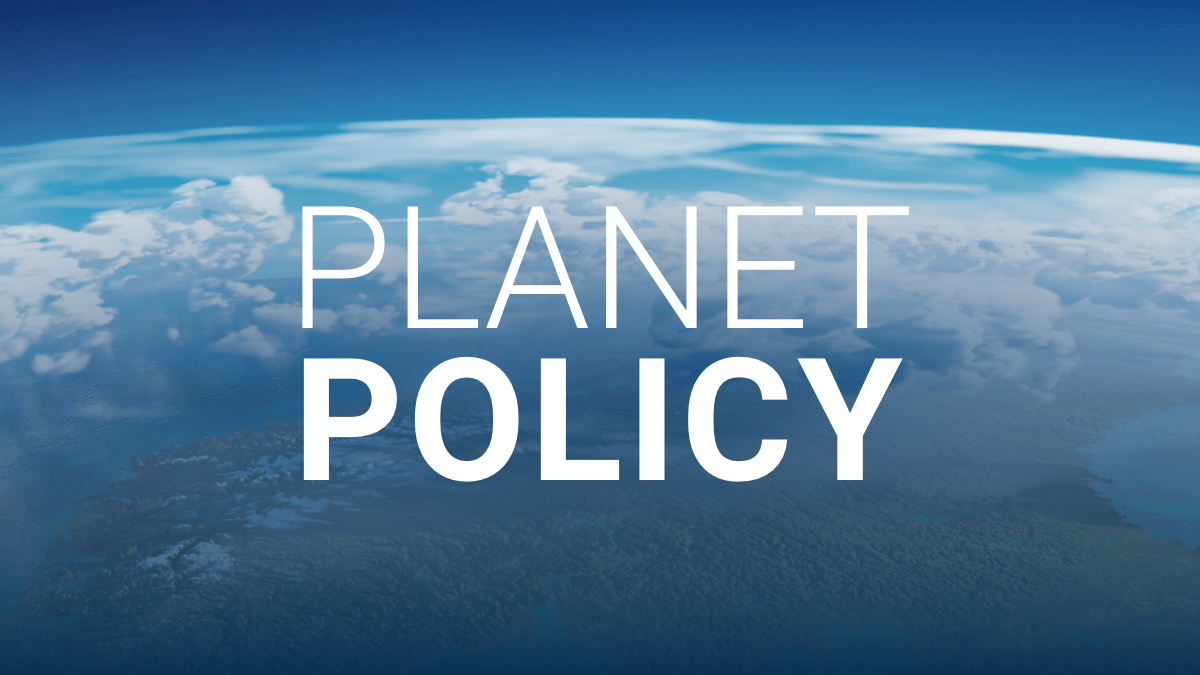
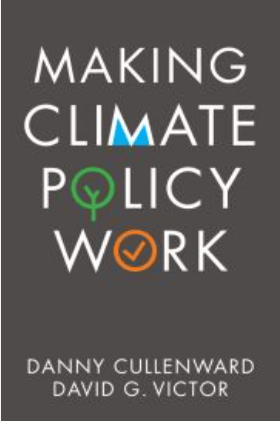

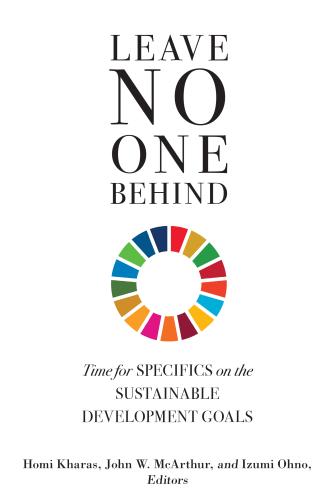

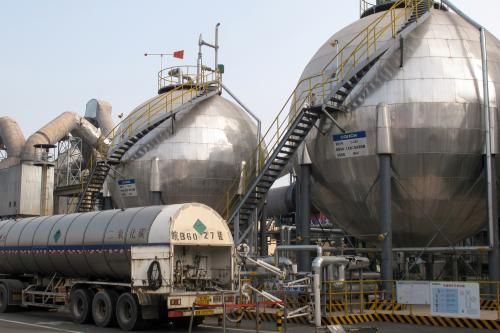
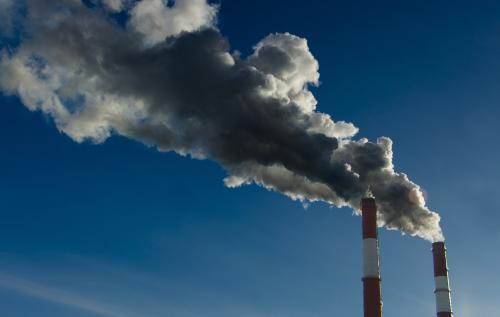













Commentary
Around the halls: Examining the impact of what does (or doesn’t) happen at COP26
October 28, 2021